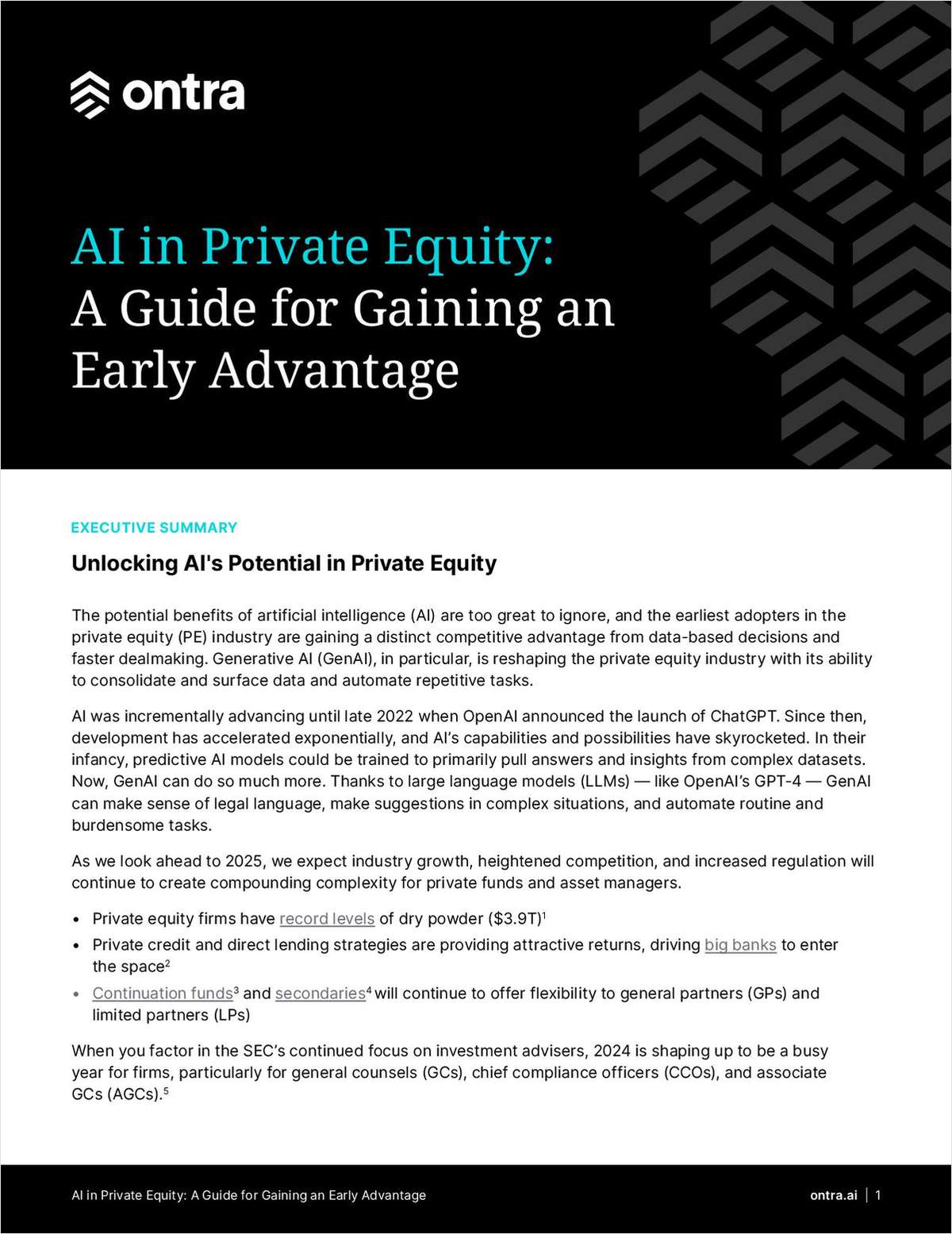 Brady Mills of Morris, Manning & Martin. Courtesy photo
Brady Mills of Morris, Manning & Martin. Courtesy photoUS-China Trade War: Three Ways Lawyers Can Help Companies Cope
U.S.-China trade troubles don't seem likely to end anytime soon, so clients are flocking to international trade lawyers for solutions.
August 09, 2019 at 01:32 PM
7 minute read
The original version of this story was published on Corporate Counsel
U.S.-China trade conflicts under the administration of U.S. President Donald Trump appear to be ramping up, not ramping down as many businesses had hoped earlier this year.
Stocks tumbled on August 5, following China's announcement that it would stop buying many U.S. farm products, and would devalue its currency in retaliation for the Trump administration's pledge to impose an additional 10% tariff on the final $300 billion group of products imported from China on September 1. The group includes everything from imported cod fillets to TVs and electric razors.
In response to China's move, the U.S. Treasury Department labelled China a "currency manipulator", and said it would seek a remedy at the International Monetary Fund. Financial markets remained volatile for the rest of the week.
Given that the trade troubles don't seem likely to end anytime soon, clients are burning up the phone lines of lawyers like Brady Mills, a partner in Morris, Manning & Martin's international trade group.
Based in Washington, D.C., Mills advises mainly companies in South Korea, Taiwan, China, Canada and Turkey on unfair trade investigations brought by U.S. producers seeking tariffs on imports of products including steel, lumber, paper and chemicals. He represents his clients in litigation before U.S. courts and international forums. But he also advises U.S. companies that are seeking exclusions from tariffs imposed by the U.S. Department of Commerce and the U.S. Trade Representative on products imported from abroad.
Mills spoke on Wednesday about three actions that lawyers can help companies take to navigate choppy waters as the conflict between the world's largest economies drags on. His remarks were edited for brevity and clarity.
1. Take advantage of the exclusion process in relation to the two sets of tariffs that have been imposed against China.
"Section 301 tariffs have been imposed in four different tranches: List 1 is $34 billion, List 2 is $16 billion, List 3 is $200 billion and List 4 is an additional $300 billion," Mills said. "By then, 97% of all exports from China will be covered.
"The most beneficial thing companies can do is to apply for an exclusion, and the most beneficial remedy would be to apply for an exclusion from the Office of the U.S. Trade Representative from Section 301 [of the U.S. Trade Act of 1974] tariffs, which were imposed to address technology transfer and intellectual property issues with China. We advise clients regularly about seeking exclusions, and U.S. companies that import from China [and other countries] can also apply for exclusions with the Commerce Department from tariffs on imports of steel and aluminium that were imposed on national security grounds under Section 232," of the Trade Expansion Act 1962. Exclusion requests are usually made on grounds that the products can't be supplied in the United States, he said.
But applying for exclusions is no slam-dunk, Mills warned. If another U.S. company objects to an exclusion, that usually results in the agency denying the request, he said. "About 35% to 40% of Section 301 exclusions are being granted and the rest are being denied. Around 70% of the Section 232 steel and aluminium requests have been granted, but there are still many pending a decision, and virtually none are granted when there is an objection from the domestic industry. It is the first line of defence, but it is not like you automatically get it."
And there's another catch, he said: government agencies have been flooded with exclusion requests and there is a backlog. "It is a huge, huge problem," Mills said. During the time the exclusion request is being considered, a business will likely have to absorb the costs of the tariffs, or pass them along.
As for U.S. exporters to China, some tariff exclusions also are available from the Chinese government for U.S. products under a new programme there.
2. Seek out alternative sources of supply from different countries.
"If you have an established supply chain with China, it isn't easy to switch to Vietnam or India as two of the more likely candidates, but testing out and trying to certify suppliers is one option," Mills said. "Also, we advise companies to be very wary of trans-shipment of products from China via Vietnam, for example. If they change the country of origin to be not subject to the tariffs, if customs investigates and finds there is a circumvention of duties, you as the importer can be on the hook for fraud or negligence penalties and duties. You've got to be very careful because there is a massive incentive to try to trans-ship.
"You have to do your due diligence to make sure they are truly the producers of the goods in Vietnam, for example." It is actually difficult to switch a supply chain quickly, but because there is no telling how long this could go on, it is worth starting the process of investigating alternatives, he said.
3. Find a third party to act as an importer of record.
"Somebody has to act as the importer of record with customs. That is the one responsible for payment of duties or tariffs," Mills said. "We have been advising U.S. importers to ask for the Chinese supplier to become the non-resident importer of record. This requires the Chinese company to post a bond and be on the hook for the duties, so the U.S. company is not responsible for the tariffs and can pick the goods up without the tariffs.
"Many companies we talk to had no idea this was even a possibility, but it can shift the liability for the tariffs onto the non-resident importer of record. The Chinese company does not have to have operations in the U.S., but it has to have a surety bond to guarantee the payment of the tariffs. Finding a surety to act as a guarantor for the Chinese supplier is not easy and can be expensive given the level of tariffs in place on imports from China, but if this is possible, it is a way to free the U.S. company from being responsible for the tariffs."
With respect to China's slight currency devaluation, Mills and other international trade practitioners said there's not much of an immediate effect for clients to worry about at this time.
Read more:
This content has been archived. It is available through our partners, LexisNexis® and Bloomberg Law.
To view this content, please continue to their sites.
Not a Lexis Subscriber?
Subscribe Now
Not a Bloomberg Law Subscriber?
Subscribe Now
NOT FOR REPRINT
© 2024 ALM Global, LLC, All Rights Reserved. Request academic re-use from www.copyright.com. All other uses, submit a request to [email protected]. For more information visit Asset & Logo Licensing.
You Might Like
View All
‘Are You Not Profiting From Postmasters’ Misery?’—Politicians Grill HSF, Dentons on Post Office Conduct

'Not a Good Look'—FCA Fines Barclays £40M But Accused of Incompetence

Gibson Dunn Sued by Crypto Client After Lateral Hire Causes Conflict of Interest

Australian Corporations More Concerned About Class Actions Risk, HSF Report Finds
3 minute readTrending Stories
- 1Cars Reach Record Fuel Economy but Largely Fail to Meet Biden's EPA Standard, Agency Says
- 2How Cybercriminals Exploit Law Firms’ Holiday Vulnerabilities
- 3DOJ Asks 5th Circuit to Publish Opinion Upholding Gun Ban for Felon
- 4GEO Group Sued Over 2 Wrongful Deaths
- 5Revenue Up at Homegrown Texas Firms Through Q3, Though Demand Slipped Slightly
Who Got The Work
Michael G. Bongiorno, Andrew Scott Dulberg and Elizabeth E. Driscoll from Wilmer Cutler Pickering Hale and Dorr have stepped in to represent Symbotic Inc., an A.I.-enabled technology platform that focuses on increasing supply chain efficiency, and other defendants in a pending shareholder derivative lawsuit. The case, filed Oct. 2 in Massachusetts District Court by the Brown Law Firm on behalf of Stephen Austen, accuses certain officers and directors of misleading investors in regard to Symbotic's potential for margin growth by failing to disclose that the company was not equipped to timely deploy its systems or manage expenses through project delays. The case, assigned to U.S. District Judge Nathaniel M. Gorton, is 1:24-cv-12522, Austen v. Cohen et al.
Who Got The Work
Edmund Polubinski and Marie Killmond of Davis Polk & Wardwell have entered appearances for data platform software development company MongoDB and other defendants in a pending shareholder derivative lawsuit. The action, filed Oct. 7 in New York Southern District Court by the Brown Law Firm, accuses the company's directors and/or officers of falsely expressing confidence in the company’s restructuring of its sales incentive plan and downplaying the severity of decreases in its upfront commitments. The case is 1:24-cv-07594, Roy v. Ittycheria et al.
Who Got The Work
Amy O. Bruchs and Kurt F. Ellison of Michael Best & Friedrich have entered appearances for Epic Systems Corp. in a pending employment discrimination lawsuit. The suit was filed Sept. 7 in Wisconsin Western District Court by Levine Eisberner LLC and Siri & Glimstad on behalf of a project manager who claims that he was wrongfully terminated after applying for a religious exemption to the defendant's COVID-19 vaccine mandate. The case, assigned to U.S. Magistrate Judge Anita Marie Boor, is 3:24-cv-00630, Secker, Nathan v. Epic Systems Corporation.
Who Got The Work
David X. Sullivan, Thomas J. Finn and Gregory A. Hall from McCarter & English have entered appearances for Sunrun Installation Services in a pending civil rights lawsuit. The complaint was filed Sept. 4 in Connecticut District Court by attorney Robert M. Berke on behalf of former employee George Edward Steins, who was arrested and charged with employing an unregistered home improvement salesperson. The complaint alleges that had Sunrun informed the Connecticut Department of Consumer Protection that the plaintiff's employment had ended in 2017 and that he no longer held Sunrun's home improvement contractor license, he would not have been hit with charges, which were dismissed in May 2024. The case, assigned to U.S. District Judge Jeffrey A. Meyer, is 3:24-cv-01423, Steins v. Sunrun, Inc. et al.
Who Got The Work
Greenberg Traurig shareholder Joshua L. Raskin has entered an appearance for boohoo.com UK Ltd. in a pending patent infringement lawsuit. The suit, filed Sept. 3 in Texas Eastern District Court by Rozier Hardt McDonough on behalf of Alto Dynamics, asserts five patents related to an online shopping platform. The case, assigned to U.S. District Judge Rodney Gilstrap, is 2:24-cv-00719, Alto Dynamics, LLC v. boohoo.com UK Limited.
Featured Firms
Law Offices of Gary Martin Hays & Associates, P.C.
(470) 294-1674
Law Offices of Mark E. Salomone
(857) 444-6468
Smith & Hassler
(713) 739-1250









